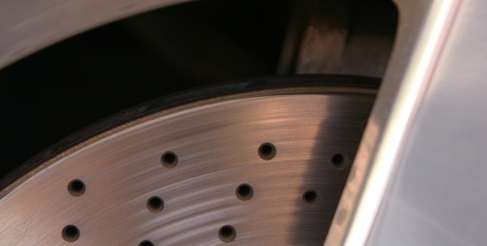
Your brakes are the most important part of the vehicle and keeping them in good shape should be a priority. Regularly inspecting your car's brakes can help identify potential problems that can be fixed before they turn into major issues. Most visual inspections consist of looking at the condition of the brake pads and rotors, as well as the brake lines and calipers. Always inspect your brakes at least twice a year to prevent problems and insure that they perform at their best.
Loosen the lug nuts with a lug wrench and lift the vehicle off the ground with a floor jack or garage lift. Finish removing the lug nuts and pull the wheel off of the axle. This will expose the brake hardware. Apply brake cleaner to the brake hardware and wipe it off with a shop towel.
Check for instances of rust on the calipers and hub. Small amounts of surface rust on the caliper can be removed with a wire brush. Rust on the caliper can be rubbed off with the application of the brakes during a short drive, but consider replacing the rotors if there is a heavy amount of rust.
Check the brake pads for signs of wear. Brake pads that are less than 1 mm thick should be replaced with new pads. Remove the pads by removing the caliper from the brake rotor and check them for uneven wear. Unequal wear on the brake pads signals problems in the brake hardware.
Check the brake rotor for signs of wear, including excess grooves, discoloration and warping. If the rotor has grooves on its surface, run a fingernail across the grooves. If your fingernail catches one or more of the grooves, your rotor needs to be turned in order to remove them.
Check the brake flex hose at the caliper for signs of aging and wear, including cracks in the rubber lining of the hose. The hoses themselves should be soft and flexible. Brake fluid on the hose indicates a leak and the hose should be replaced. Check the brake lines that run underneath the vehicle for signs of corrosion and rust.